Hisserdude
Arachnoking
- Joined
- Apr 18, 2015
- Messages
- 2,495
Guys, gals, non-binary folk, I have an announcement to make... Click beetles are SO underrated.  Like, ridiculously so, at least in the pet beetle hobby. How is it that a group of beetles that has many species with brilliant adults, predatory or partially predatory larvae, and very high survival rates in captivity gets little to no attention in the pet trade? It's ridiculous, especially here in the US where we have so many awesome natives!
Like, ridiculously so, at least in the pet beetle hobby. How is it that a group of beetles that has many species with brilliant adults, predatory or partially predatory larvae, and very high survival rates in captivity gets little to no attention in the pet trade? It's ridiculous, especially here in the US where we have so many awesome natives!  Well, hopefully this post coupled with my post on bioluminescent click beetles can serve to sway some people into the small but growing Elateridae breeding hobby, as I show off some species in the genus Alaus, commonly called "Eyed Elaters".
Well, hopefully this post coupled with my post on bioluminescent click beetles can serve to sway some people into the small but growing Elateridae breeding hobby, as I show off some species in the genus Alaus, commonly called "Eyed Elaters".
These are some of the largest and most impressive of our US click beetles, and there are 5 species found in the US, Alaus lusciosus, Alaus melanops, Alaus myops, Alaus oculatus, Alaus patricius and Alaus zunianus. Adults feed on fruits, sugar water and beetle jellies in captivity, and fly to sap flows and such in the wild to feed. The larvae of Alaus, unlike the bioluminescent Pyrophorini click beetles I breed, are fully carnivorous as soon as they hatch, and only feed on other inverts, they won't accept dog food or other protein sources. As such they are a bit more challenging to breed than other Elaterids, and you have to have a keen eye to find and isolate hatchling larvae before they start eating each other... Still, I am up to the challenge, it's certainly worth it for such a stunning genus!
Here is the first species I worked with, that I unfortunately failed to breed as I knew very little about Elaterids back then, Alaus melanops (Western Eyed Elater). This species is native to the western US, including Idaho where I currently live. Sadly I've not been able to go out and collect some this year, but oh well, hopefully I'll get the chance to work with them again one day!



That's the least impressive one out of the way LOL. Next up are my Alaus cf. lusciosus. I currently have two adult females which I've already seen ovipositing, so fingers crossed I get some offspring soon! Alaus lusciosus are often referred to as the "Texas Eyed Elater". As the common name would suggest this species is found in TX, specifically south, central, and parts of east TX, but their range also encompasses CO, KS, NM and Mexico. Their easternmost range overlaps with that of A.oculatus, the "Eastern Eyed Elater", however the white markings on the elytra of A.lusciosus are more clumped and patchy than those of A.oculatus, which has smaller, more evenly dispersed white spots.
Alaus lusciosus are often referred to as the "Texas Eyed Elater". As the common name would suggest this species is found in TX, specifically south, central, and parts of east TX, but their range also encompasses CO, KS, NM and Mexico. Their easternmost range overlaps with that of A.oculatus, the "Eastern Eyed Elater", however the white markings on the elytra of A.lusciosus are more clumped and patchy than those of A.oculatus, which has smaller, more evenly dispersed white spots.
Despite that, it can still be a bit hard to differentiate them where their ranges overlap, and these ones were collected in the Dallas/Fort Worth area, which is in the overlap range between the two... they look quite different from most A.oculatus I've seen, and bigger too, so I do think these are true A.lusciosus. I did upload pics to Bugguide though, and the resident Elateridae expert there, Blaine Mathison, said that they'd need to see the genitalia to actually ID these down to species, so I'll just label these as cf. lusciosus for now until they pass away and I can get pics of their genitalia for a better ID.
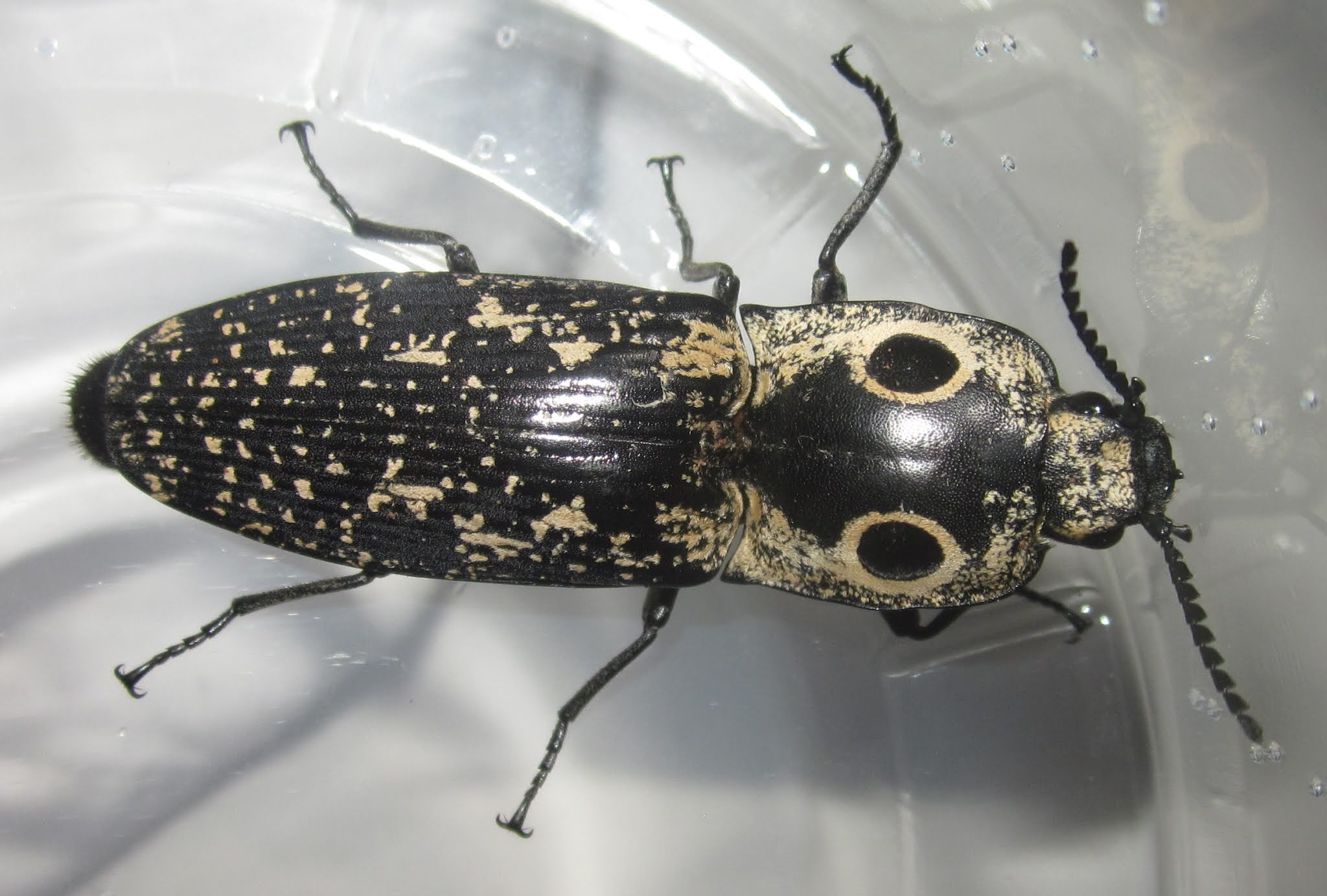
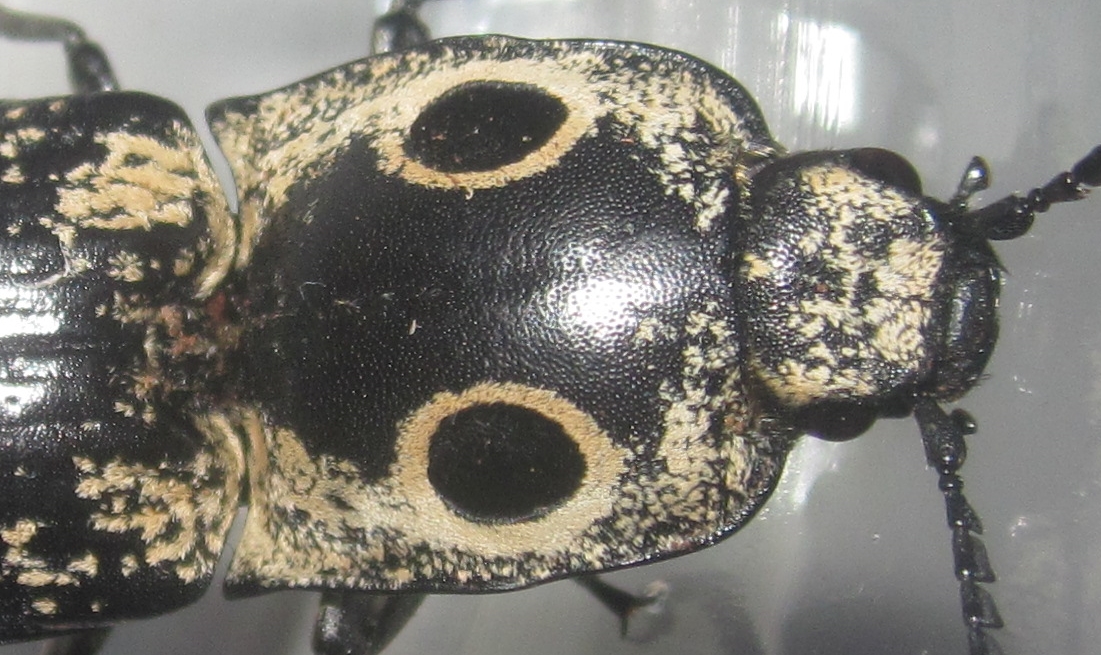
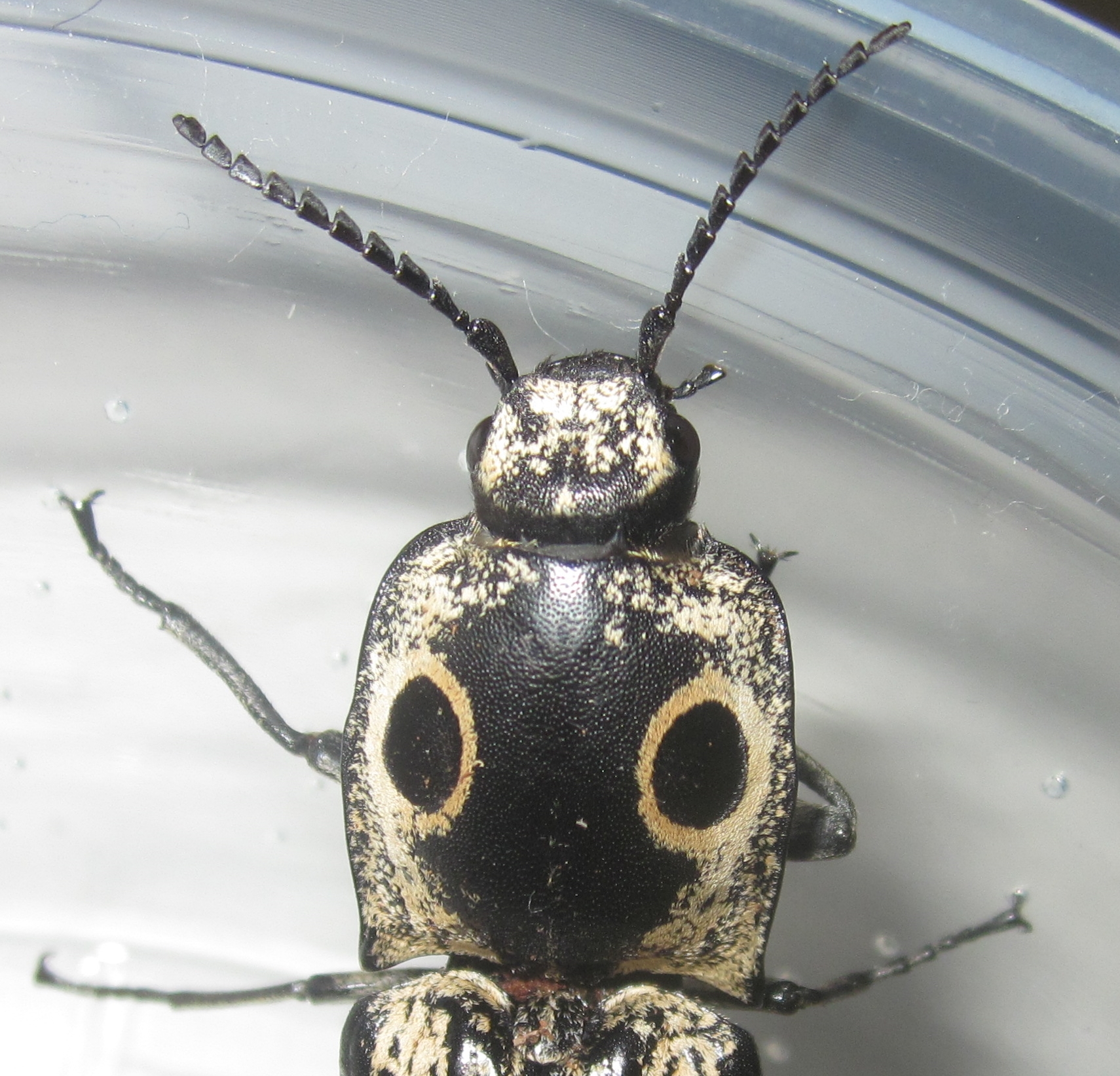
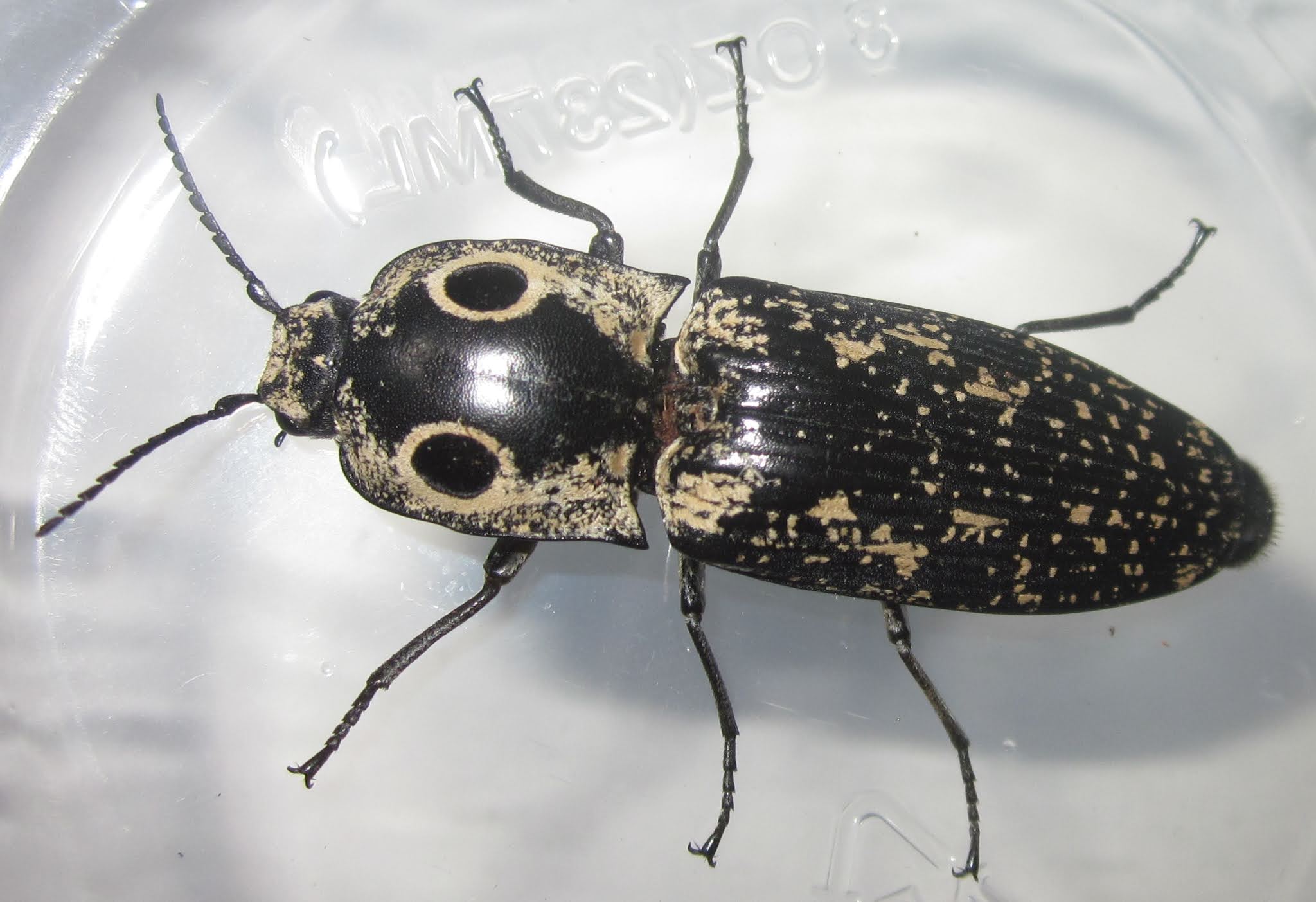
Now for the rarest, and in my opinion prettiest of the US Alaus species, Alaus zunianus (Zuni Eyed Elater)! I am incredibly impressed at the sheer size on the one female I currently have, she's about 56 mms long, and THICC as heck! Seriously, this beetle has got some weight to it! Pretty sure this is the largest of the US Alaus species, and is endemic to Arizona and New Mexico. I am really really hoping she'll lay some eggs for me, she still looks young and lively, so fingers crossed!
I am incredibly impressed at the sheer size on the one female I currently have, she's about 56 mms long, and THICC as heck! Seriously, this beetle has got some weight to it! Pretty sure this is the largest of the US Alaus species, and is endemic to Arizona and New Mexico. I am really really hoping she'll lay some eggs for me, she still looks young and lively, so fingers crossed!
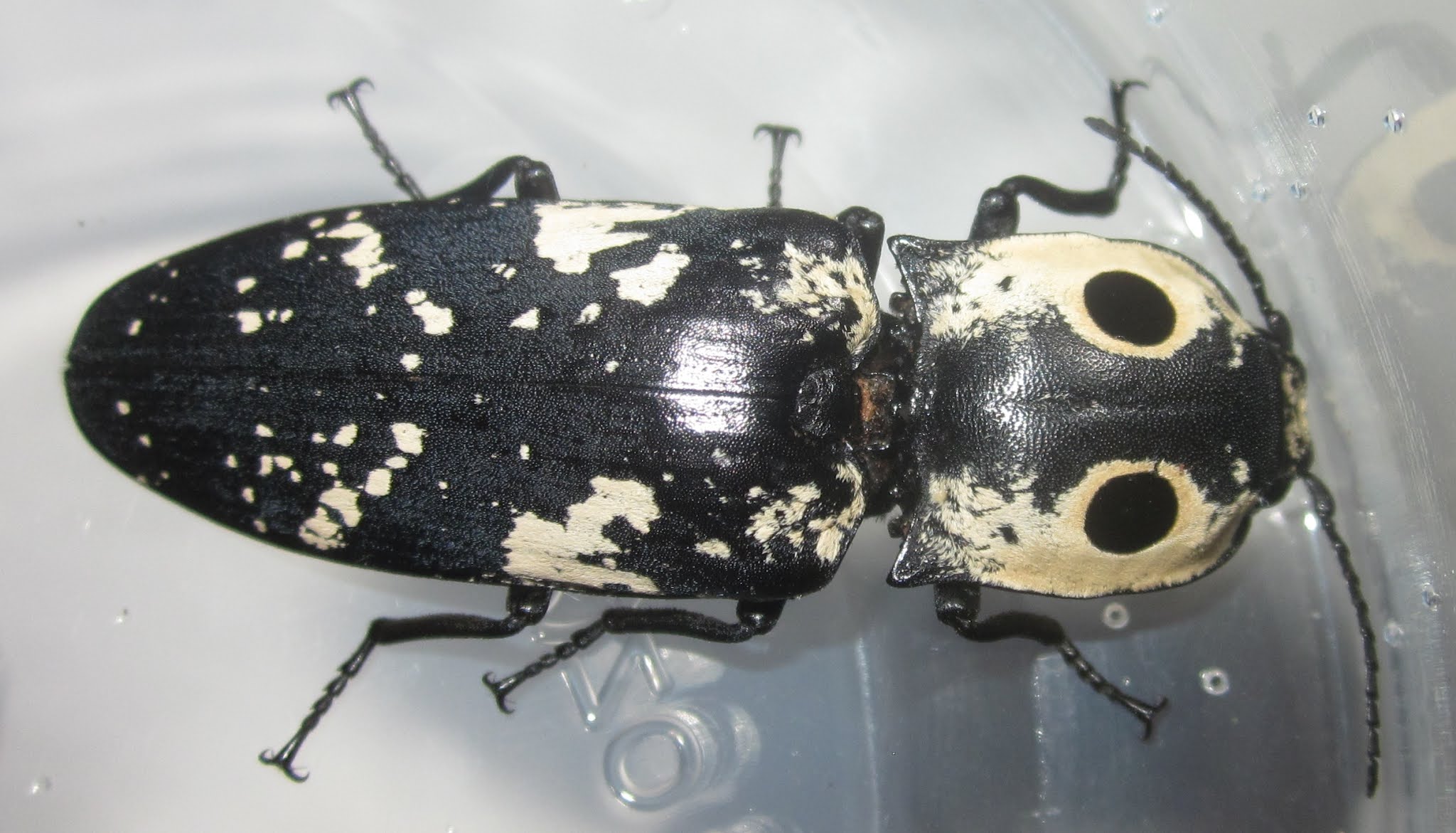
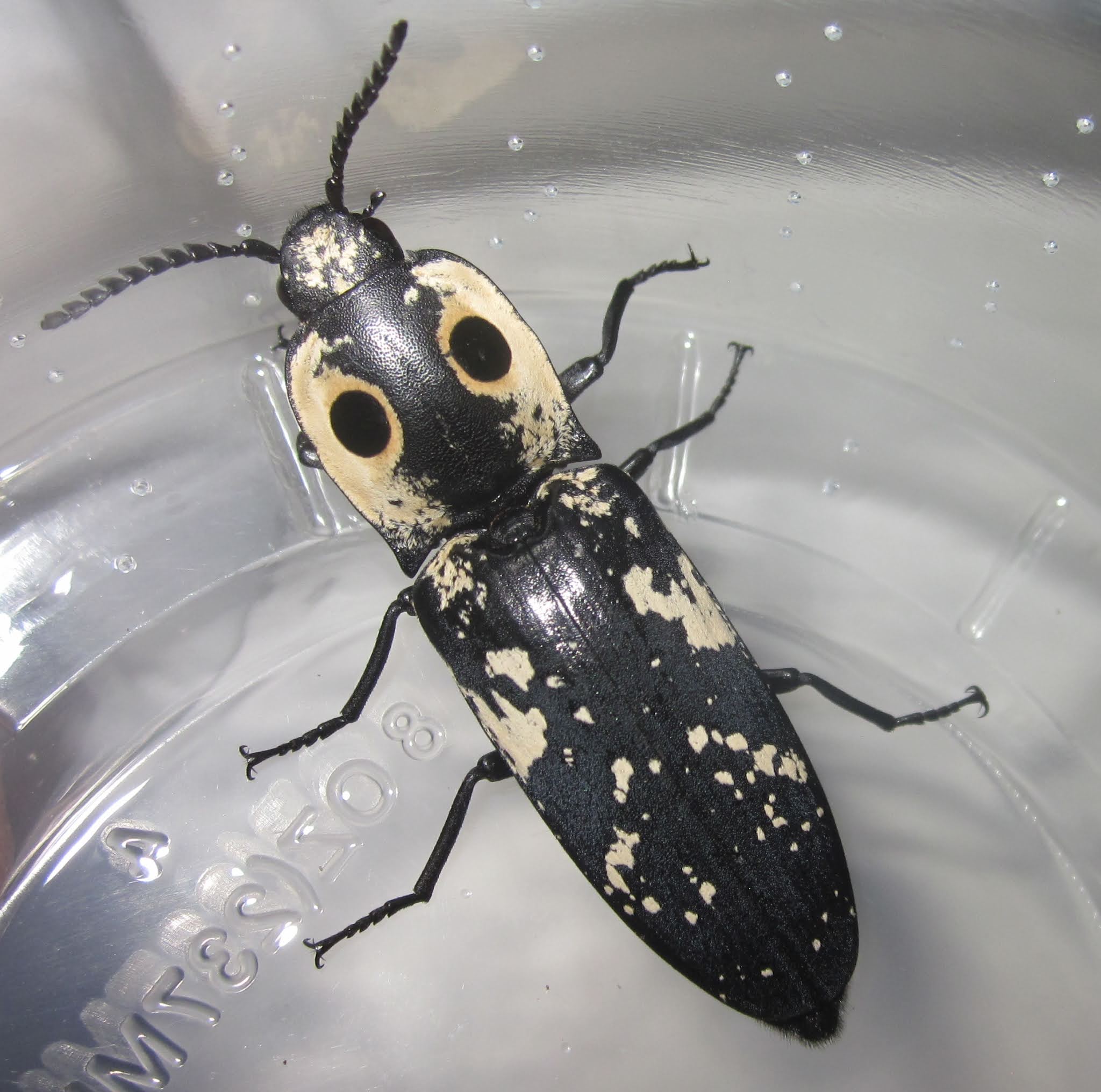

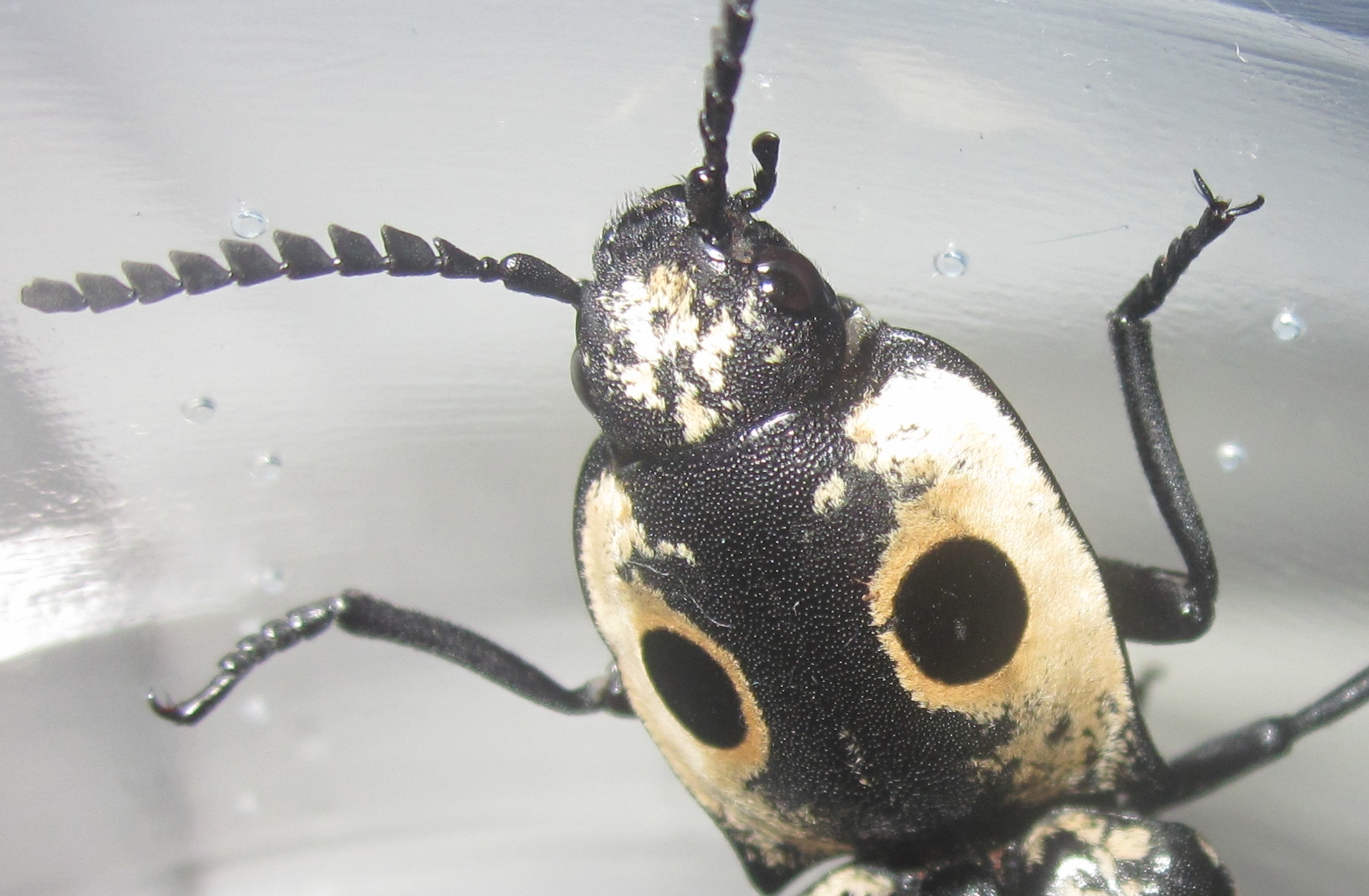
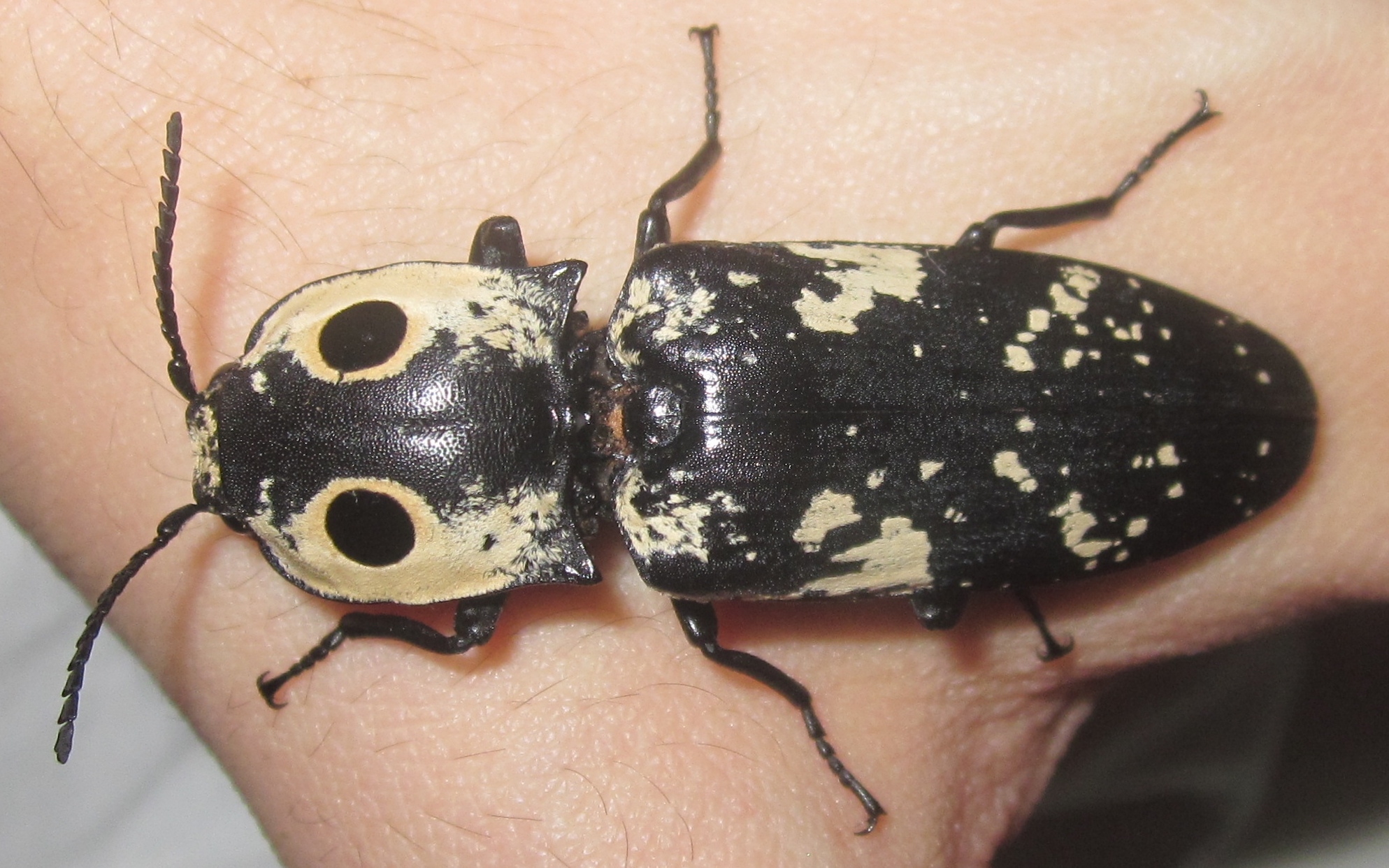
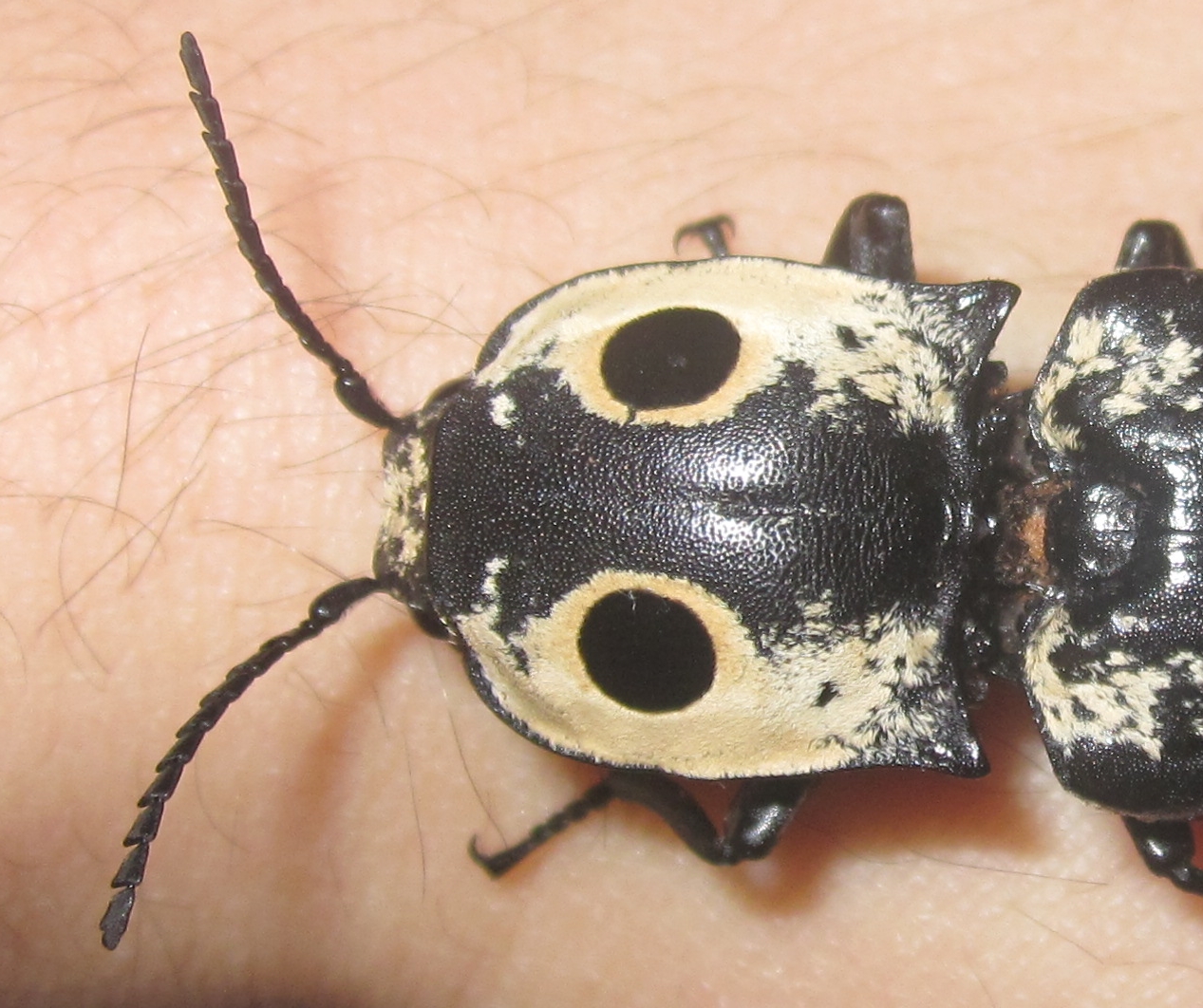
Hope some of ya'll enjoy this, and I perhaps spur some more people to take to keeping and breeding Elateridae.
These are some of the largest and most impressive of our US click beetles, and there are 5 species found in the US, Alaus lusciosus, Alaus melanops, Alaus myops, Alaus oculatus, Alaus patricius and Alaus zunianus. Adults feed on fruits, sugar water and beetle jellies in captivity, and fly to sap flows and such in the wild to feed. The larvae of Alaus, unlike the bioluminescent Pyrophorini click beetles I breed, are fully carnivorous as soon as they hatch, and only feed on other inverts, they won't accept dog food or other protein sources. As such they are a bit more challenging to breed than other Elaterids, and you have to have a keen eye to find and isolate hatchling larvae before they start eating each other... Still, I am up to the challenge, it's certainly worth it for such a stunning genus!
Here is the first species I worked with, that I unfortunately failed to breed as I knew very little about Elaterids back then, Alaus melanops (Western Eyed Elater). This species is native to the western US, including Idaho where I currently live. Sadly I've not been able to go out and collect some this year, but oh well, hopefully I'll get the chance to work with them again one day!
That's the least impressive one out of the way LOL. Next up are my Alaus cf. lusciosus. I currently have two adult females which I've already seen ovipositing, so fingers crossed I get some offspring soon!
Despite that, it can still be a bit hard to differentiate them where their ranges overlap, and these ones were collected in the Dallas/Fort Worth area, which is in the overlap range between the two... they look quite different from most A.oculatus I've seen, and bigger too, so I do think these are true A.lusciosus. I did upload pics to Bugguide though, and the resident Elateridae expert there, Blaine Mathison, said that they'd need to see the genitalia to actually ID these down to species, so I'll just label these as cf. lusciosus for now until they pass away and I can get pics of their genitalia for a better ID.
Now for the rarest, and in my opinion prettiest of the US Alaus species, Alaus zunianus (Zuni Eyed Elater)!
Hope some of ya'll enjoy this, and I perhaps spur some more people to take to keeping and breeding Elateridae.
